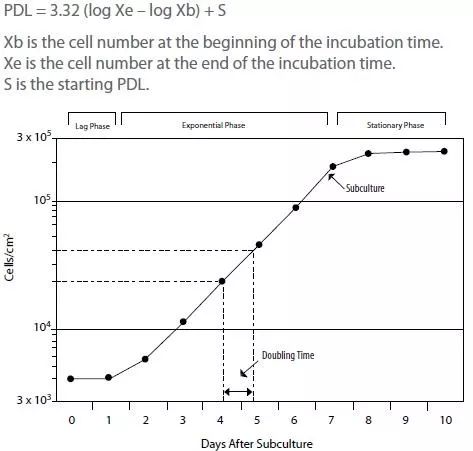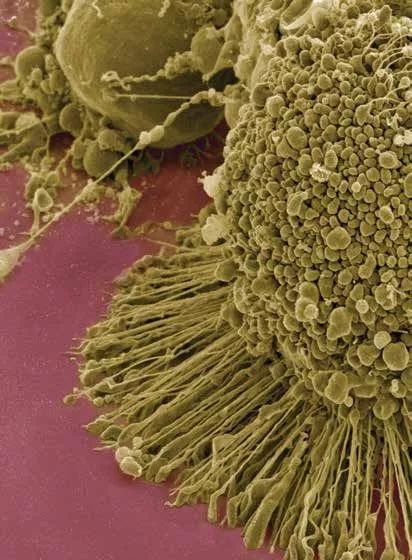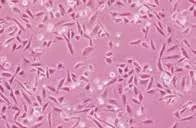
Friends who have raised cells know that cells are our "little babies". They are afraid of breaking when held in the hand, melting when held in the mouth, and losing when seen in the eyes. Especially in order to successfully promote the healthy growth and reproduction of animal cells in cell culture experiments, we all hope to make sufficient preparations in advance to avoid situations where the experiment cannot proceed due to inadequate preparation or negligence in a certain aspect. Therefore, understanding the main process of animal cell culture in advance is crucial.
Today, the editor has sent you a simplified version of the cell culture guide from ATCC, hoping to help you cultivate our "little baby" cells with ease. Come and collect it now~
Note: This guide is a routine method, and there may be differences in specific operations for different cells. Please refer to the ATCC product manual for accuracy.



Resuscitation of frozen cells

Recovery Procedure
1) Prepare a cell culture container (such as a T-75 cell vial), add at least 10 ml of appropriate culture medium, and balance the temperature and pH.
2) Remove the cryovial from the liquid nitrogen tank and slowly shake it in a water bath at 37 ℃ (or a temperature suitable for the cell) until the ice crystals completely melt (about 2 minutes), paying attention to the rapid thawing process.
3) Remove the cryovial from the water bath, soak or spray alcohol for disinfection. Subsequent operations must be cahhied out in a sterile workstation and strict sterility must be ensured.
4) Unscrew the cryovial cap and transfer the cell suspension to a sterile centrifuge tube containing 9ml of complete culture medium. Gently centrifuge (125g × 10min), discard the supernatant and remove the cryoprotectant. Be careful not to disturb the cell layer. Add 1-2 ml of complete culture medium and resuspend the cells. Slowly blow to loosen the cell clusters. Transfer the cell suspension to a container containing culture medium and mix thoroughly.
5) After 24 hours, check the cell status.
Note: When cells are revived, the frozen cell solution should be melted as quickly as possible, then quickly mixed with complete culture medium and inoculated into a suitable cell vial.

Single layer adherent cells
To ensure the logarithmic growth of monolayer adherent cells, regular passaging is necessary. When cell growth approaches the late stage of exponential growth (convergence rate of approximately 70% to 90%), prepare for passage. Regarding the passage process, ATCC provides product instructions that recommend cell passage allocation ratios and supplementary culture medium strategies.
Single layer adherent cell passage requires breaking the connections between cells. For loose connections, striking the sidewall of the culture bottle can separate the cells. In many cases, trypsin/EDTA proteolytic enzymes are required for digestion. For some cell lines, mechanical methods such as scraping are required to separate the cells. After the cells are separated into single-cell suspensions, they are diluted to an appropriate density and transfehhed to a new culture flask. In the appropriate growth medium, the cells will adhere to the wall again for growth and division.
Due to the uniqueness of each cell, incubation time and temperature, number of washes, or solution formulation may vary. During the separation process, the cells should be closely observed under a microscope to prevent cell damage. This process is based on using the appropriate culture volume for the container.
Suspension cell
Compared to single-layer adherent cells, the passage of suspended cells has more advantages. Single layer adherent cells require proteolytic enzymes, which can cause cell damage. And suspended cells can be passaged using dilution method, with no delay in cell growth and less requirement for laboratory space. Passage culture is linearly scaled up. For example, cells can be cultured in fermentation tanks.
According to the cell type, the suspension culture inoculation density ranges from 2 × 10 ^ 4 to 5 × 10 ^ 5 live cells/ml. The cell density at harvest is 2 × 10 ^ 6 cells/ml. If the cell seeding density is too low, they will experience a growth delay phase, with very slow growth or even complete death. If the cell density is too high, the cells may deplete the nutrients in the culture medium and suddenly die.

Freeze storage program
1) Before freezing, check whether the cells are contaminated with bacteria, fungi, mycoplasma, and viruses. If contamination is confirmed, the cell should be destroyed.
2) The frozen culture medium consists of complete medium and 5% DMSO. Due to the exothermic dissolution of DMSO, undiluted DMSO cannot be directly added to the cell suspension.
3) Collect cells by centrifugation at a gentle rate (125g × 10 min) and resuspend them at a density of 1 × 10 ^ 6-5 × 10 ^ 6 live cells/ml.
4) Mark the cell name, number, and freezing date on the cryovial. Then add 1-1.8 ml of cell suspension to each tube (depending on the volume of the cryovial) and seal.
5) At room temperature, equilibrate the cells in frozen culture medium for 15-40 minutes (do not exceed). During this period, the cell suspension can be evenly divided and added to the cryovial.
6) Place the cryovials in a pre cooled to 4 ° C program cooling box, and then place them in a -70 ° C (or colder) refrigerator for at least 24 hours. Alternatively, a programmable electronic cooling system that has been pre cooled to 4 ℃ can be used.
7) Quickly transfer the cryovials to a liquid nitrogen tank or a -130 ℃ freezer.
8) Record information such as freezing location and process details.
9) After 24 hours, remove a cryovial and resuscitate it to determine cell viability and contamination.
Note: The above program is applicable to most cells. Please refer to the cell manual for the formula of the frozen culture medium. When frozen, cells should be in the exponential growth phase.
The content of the article is sourced from the official ATCC "Animal Cell Culture Guidelines" provided by Beijing Zhongyuan.